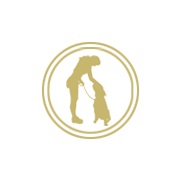Privacy Policy: Your email address is 100% safe.
We don't spam and hate it as much as you do :-) You can also unsubscribe from our mailing list at any time.
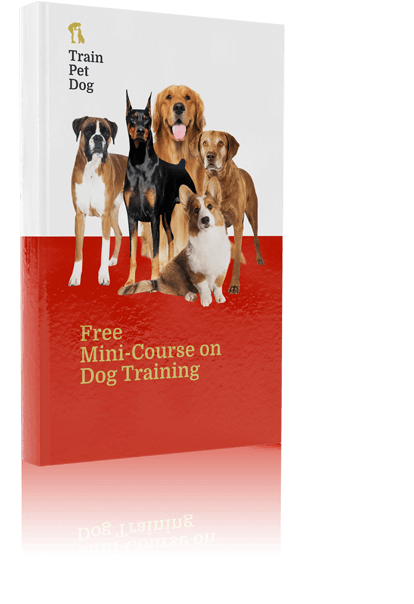
Sign Up
Dogo Argentino: Origin, Personality, Fitness & Health (Dogo Argentino, Dogo)
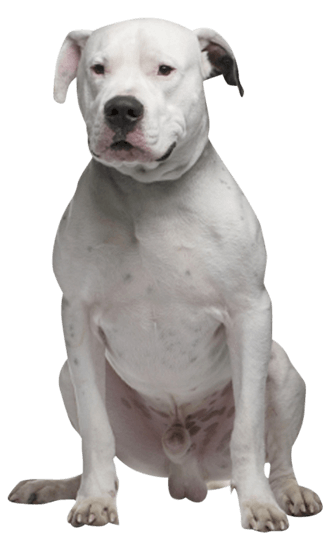
Country of Origin, History of Argentine Dogos
Origin and History of the Breed
The Argentine Dogo breed was developed in the 1920s in Argentina. Dr. Antonio Nores Martinez had given rise to this breed.
The objective of the breeding endeavor was to create a dog that could be a good pack hunter and guardian and could also be trusted with the family.
The Cordoba Fighting Dog was chosen as the base for the breed. Upon crossing it with Great Dane, Boxer, Spanish Mastiff, Old English Bulldog, Bull Terrier, Great Pyrenees, Pointer, Irish Wolfhound and Dogue de Bordeaux the Argentine Dogo was finally created.
The Dogo’s features suitably met the initial expectations of Dr. Martinez and also turned out to be a worthy guide dog.
It also proved to be successful in military and police work.
Argentine Dogo Tools
Breed Selector Tool - is the Argentine Dogo the right breed for you?
Is the Argentine Dogo the right breed for you and your family?
Find out by using our Free Dog Breed Selector Tool
Check Your Argentine Dogo's Learning Style
Are you aware dogs also have a learning style that can greatly affect their ability to housetrain as well as be trained correctly. Evaluate your Argentine Dogo's learning style and personality using our free Learning Style tool so that you are better able to provide him with the proper Argentine Dogo training methods.
Is your Argentine Dogo dominating over you?
Does your Argentine Dogo bark unnecessarily? Does your Argentine Dogo come to you when you call? Download a FREE Report on Dog Dominance for you and your Argentine Dogo and learn how to control your dog.
Do you make these mistakes with your Argentine Dogo?
Are you inadvertently snow-balling bad behavior in your Argentine Dogo? Evaluate your Dog Training Style from our Free Tool and learn how best to deal with your dog.
Argentine Dogo Calorie Calculator
Do you know how many calories your Argentine Dogo needs every day and how many cups of food you should be giving it every day? Click here to use our Argentine Dogo Calorie Calculator.

A General Description of the Breed
The Argentine Dogo is a graceful dog having a smooth and muscular body. It is large in size and has superior athletic abilities. The dog has got very strong and tenacious jaws. It has got a short, sleek, glossy, thick and white coat that is capable of reflecting heat. It does not have an undercoat. The length of the body of the Argentine Dogo is slightly longer than tall. The females are found to be somewhat longer in body than the males.
The skull is slightly domed and massive in size and the front of the dog’s head is convex with a moderate stop. The muzzle is powerful and is slightly higher at the nose than at the stop. The skull and the muzzle are of nearly the same length. It is customary to keep the ears of the dogs cropped. However, they may also be allowed to hang naturally- close to the skull. The eyes of the dog are dark brown or dark hazel in color and one can find an alert, intelligent and intense expression in them. The nose is black. The Argentine Dogo’s chest is wide and deep. This makes it look strong. The neck skin is loose and this offers protection during hunts. The tail is relatively short. It is set low and is thick at the base and tapering. It reaches to the hock. The tail is never carried over the back of the dog. When excited, however, the dog can swing its tail and carry it high.
Height
Heights of Argentine Dogos vary between 23.5 inches and 27 inches.
Male dogs: 24.3 inches
Female dogs: 23.5 inches.
Weight
Argentine Dogos’ weights vary between 75 pounds and 100 pounds.
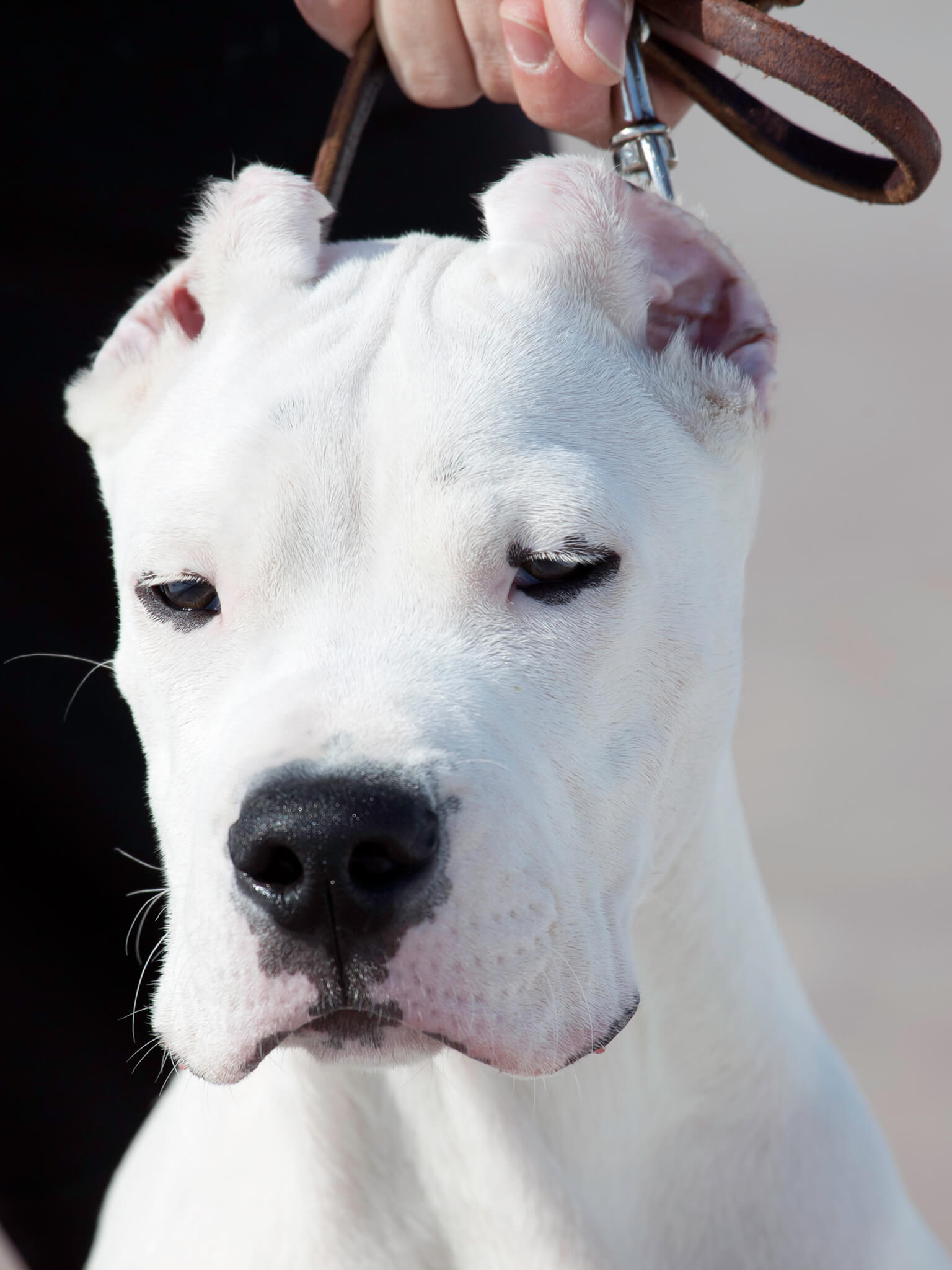


Free Argentine Dogo Training Secrets
Free Course on Argentine Dogo Training & Obedience
Stop All Bad Behavior, Excessive Barking and Biting
Argentine Dogo Personality Traits
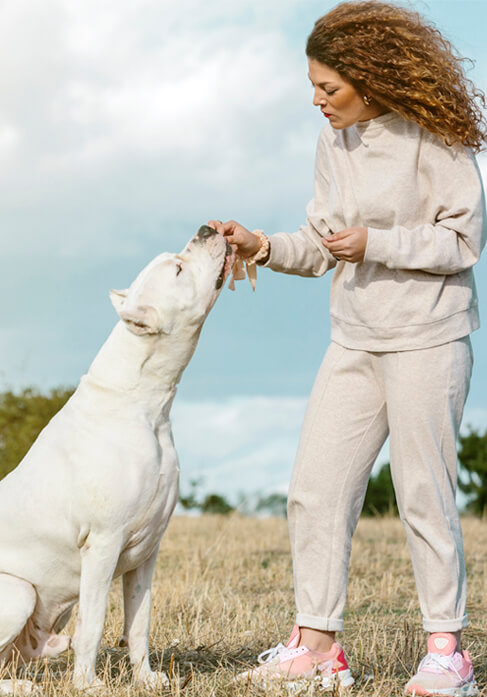
Temperament of the Breed
Argentine Dogos are affectionate dogs. They are loyal to the members of the families that keep them as pets. They crave for attention and seek a firm and consistent but loving hand to take care of them. The Dogos are playful and intelligent creatures. They love to kiss and cuddle with the members of the household where they are kept. They have high pain bearing capacities and are tolerant towards children who may playfully cause them pain.
The Dogos act protectively about what they perceive as their territory and guard this fearlessly. If properly socialized from young age, especially with dogs of the same sex, then they can get along pretty well with other dogs later. However, that does not ensure that they will never pick up fights with other dogs trying to assert dominance over them.
The Argentine Dogo is exceptionally skilled in hunting, tracking, acting as a watchdog, guarding, police work, military work and narcotics detection.
Better suited to outdoor or indoor lifestyle?
Argentine Dogos can be kept in apartments provided they get enough exercise. It is best for the dog if the home has a yard of average size. It is important to bear in mind that even though the Dogo can be kept outside the home at other times it needs to be brought indoors in case temperatures drop below freezing point.
How active is the breed?
The Argentine Dogo needs to be exercised regularly. A daily long walk or jog will meet the exercising requirements of the Dogo.
Grooming
The nails of Dogos grow pretty fast. Hence these need to be frequently clipped. The dog is an average shedder and the single white coat is easy to care for. It does not emit doggy odor too.


Free Argentine Dogo Training Secrets
Free Course on Argentine Dogo Training & Obedience
Stop All Bad Behavior, Excessive Barking and Biting
Health and Care
Though the Argentine Dogo is generally considered to be a healthy dog breed, yet, like other breeds the Dogo too may be having certain genetic disorders. Deafness is a problem especially associated with white dogs like the Dogo. The Dogo may be born partially or completely deaf. Thus it is important for all Dogos to be BAER (Brainstem Auditory Evoked Response) tested. Hip Dysplasia is yet another disorder of Dogos that needs to be checked out.
National Breed Clubs
Life Expectancy
Dogos live for around 10 or 12 years.
Group: The Argentine Dogo is classified under the Mastiff group. It has been given the Working Group designation.
AKC Popularity Ranking: Not recognized by AKC
Also Known As: Dogo Argentino, Argentinian Mastiff. It is commonly referred to by its nickname Dogo.
Train Your Argentine Dogo To Listen To You
Get Instant Access to Your Training Now - For Free
Sign up for our Free Argentine Dogo Mini Course to have a housebroken, obedient dog that happily comes to you every time you call.
You'll learn new commands to obedience-train your dog as well as how to housebreak your dog in 6 days or less.
You'll also learn how to eliminate bad habits like barking, nipping or biting, jumping, or pulling on the leash.Here's just s small fraction of what else you'll learn in the course:
How to lead and think like a pack dog - the new psychology.
3 dangerous mistakes that most Argentine Dogo owners make when they are trying to potty train their dogs.
The 2 main reasons why your dog barks excessively and how to control its excessive barking.
How to obedience train your Argentine Dogo to permanently end behavioral problems like Jumping, Aggression, Pulling on Leash.
A surprisingly easy way to teach your dog cool new tricks.
How to improve your dog's lifespan and keep it from getting overly heavy with a healthy and nutritious diet.
Getting Pro help fast - how to get access to our expert trainers when you need them most.
One hidden psychological trigger that all Argentine Dogos have... that practically allows you to "analyze" and "control" your dog's every action.
Priority access to the free online seminars conducted by our training experts.
Whereas other dog training related web sites and books offer generic information for dogs in general, ours is the ONLY web site that offers Argentine Dogo information specifically, from a renowned panel of experts - because as you probably know, Argentine Dogos have their own special training requirements that other dogs don't have.
Our Dog Experts
The Argentine Dogo training information you will read here was developed by a panel of renowned dog training experts whose combined wisdom represents nearly 100 years of specialist experience training dogs.
Here are a few of our experts:




